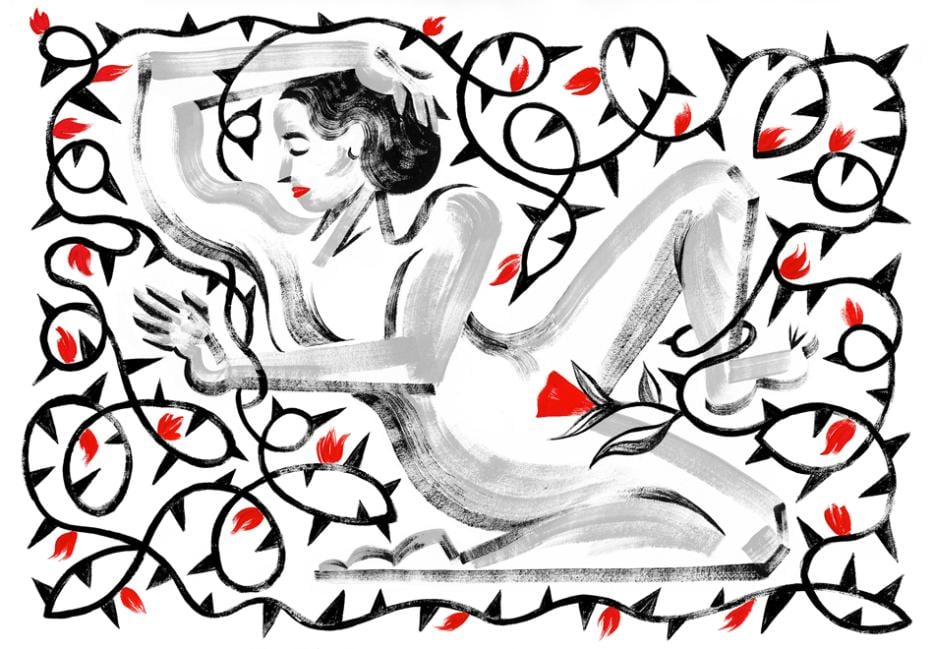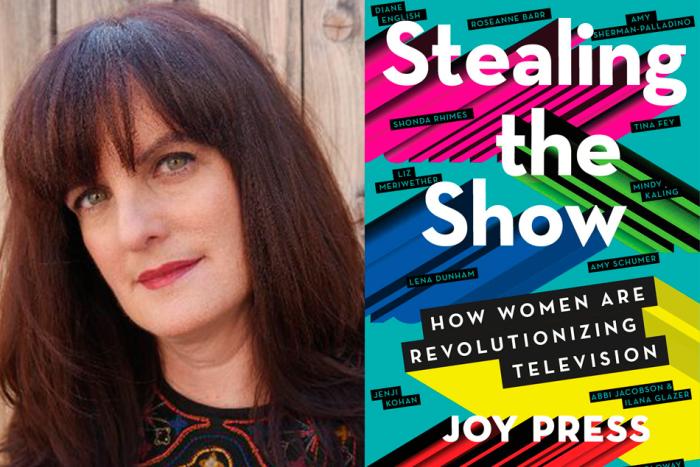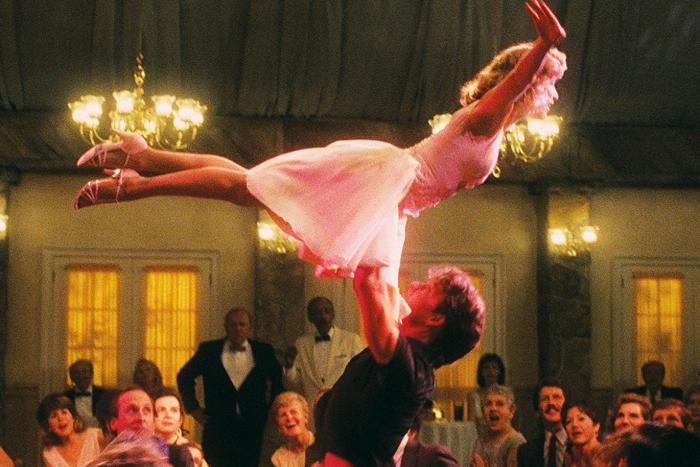Sitting in my car on my lunch hour, I’m trying to explain to the woman on the other end of the line exactly why I’d thrown a set of keys at my boyfriend four years earlier. No, I told her, sweating out of embarrassment under my winter coat, I don’t remember what we were fighting about. No, he’s never been violent toward me.
Whatever it was, it had definitely been something stupid I’d blown out of proportion—a trivial fight that escalated during a long walk back to our apartment. By the time I’d unlocked the door, I was raging. I whipped the keys at him and they hit the door of the hallway closet, breaking my keychain. I’m pretty sure I’d been aiming at his head.
What I don’t tell the research assistant on the phone: it wasn’t the first or last time I’d flown into a fit of rage during a stupidly benign argument. (Two years ago, our plastic coffee spoon met the same end as that key chain.) I could be a fuse ready to light at the smallest perceived slight from him. For pretty much as long as I can remember, I’ve been unable to control my emotions around intimacy. I love my partner, but affection lives in a churning gyre inside my head. I know how I feel, and how I want to express myself, but I just can’t get there. So, I throw keychains instead.
A few days before that phone call in my car, my boyfriend Matt and I had filled out separate questionnaires on iMacs in a tiny room in the Couples and Sexual Health lab at Dalhousie University in Halifax. The same research assistant left us with a pack of cookies each and bottles of water. The questionnaire can take a while, she explained. For the next hour and a half, we answered multiple-choice questions about the most intimate details of our relationship, as part of a study on treatment options for women with a chronic genital pain disorder called “provoked vestibulodynia,” or PVD. I rated pain on a scale of bearable to “I feel like I can’t go on.” I hesitated before admitting that I’d once thrown something at him during a fight. (But ultimately I did—for science’s sake.) Matt answered other questions: did he feel more or less loving toward me when I felt pain? Does he ever feel like he can’t go on in this relationship?
Filling out the survey that afternoon, I stopped dead at a question asking how the pain made me feel. “It makes me feel like I’m not a real woman,” read one multiple-choice option. I clicked on it.
*
For those lucky enough to have never experienced this kind of genital pain, let me give you an idea: it feels somewhere between an internal carpet burn and the slicing of many small blades, and it can be triggered by any internal vaginal pressure, even the lightest touch. Sex becomes not merely un-enjoyable but unbearable. Your body seizes up. You cry a lot, feel like you’re broken. And though many people have never heard of PVD or other genital pain disorders (broadly called vulvodynia), they’re common, affecting between eight and sixteen percent of women.
But you wouldn’t learn that by talking to family doctors. Vulvodynia hasn’t received the same medical attention as erectile dysfunction, and many GPs aren’t even aware of the disorder (though researchers in Canada have been studying the links between genital pain, biology and psychology for decades). As a result, women who seek medical care for vulvodynia (which is about half of those suffering) will visit an average of five physicians before being diagnosed. And only between 1.4 to nine percent of women with vulvodynia do finally receive a diagnosis. It’s a lonely and desperate experience: your most intimate moments are the source of excruciating pain. And finding a doctor who can acknowledge this dysfunction, let alone treat it, can take years, if it ever happens at all.
My pain started like this: During my second year of university in 2004, I got a bacterial infection called vaginosis. The doctor at the university’s walk-in clinic put me on a round of antibiotics, which gave me a yeast infection. Even when the itch from the yeast infection was finally gone, I kept treating myself with Canesten and Monistat for months, because the burning pain lingered. It never left. (While researchers don’t know specifically what causes PVD, there are correlations between the disorder and repeated yeast infections, early use of birth-control pills, anxiety, childhood trauma, and a genetic predisposition to inflammation.) The first pap test I ever had felt like a physical assault. I lay in bed for hours because the slightest movement felt like someone was setting my insides on fire.
I saw my doctor on campus about the lingering pain. She suggested I try switching to a birth control pill with a higher dose of estrogen. It didn’t work. I talked to my family doctor in New Brunswick about it. She suggested I try a pill with a much lower dose of hormone. That didn’t work. I talked to her again and she suggested I try using more lubrication. That didn’t work either. Nothing did.
Living in Toronto, five years after the pain first set in, I psyched myself up to talk to a new doctor, after yet another agonizing pap test. She suggested I might have vulvodynia, but moved on quickly, without offering a solution. And I was too timid to push.
A few years after this, and more than a decade after the pain began, long after I had all but resigned myself to it, Matt and I were living in Halifax, and things in our relationship were at a low point. We were struggling, as couples sometimes do, with differences between us, but the pain wedged in even more physical and emotional distance. I noticed in a local newspaper a story about Dr. Natalie Rosen’s research on PVD. My heart lurched. Reading her explain this pain was the first time I felt validated. It was an actual medical condition; it wasn’t just me. Her lab was looking for women to participate in a study on potential treatments, and just like that, I had an option. I could get help if I called Dr. Rosen’s sexual health lab.
But I didn’t. I just wasn’t ready to talk about it. A little more than a year later, we were screaming at each other at least weekly and were confused about what we each wanted. We were tired. It felt like we had a choice: either fix it or let it die. I decided to pick up the phone.
*
How does a body react to chronic pain? I can tell you two ways.
As the nerve endings that elicit pain become more sensitive to touch, your brain starts to overreact. Maybe once upon a time you felt pain only when you had sex, but eventually it starts to hurt when you put in a tampon, when you’re on your period, sometimes even when you sit down. Eventually it flares even at the idea of intimacy, and you change, subtly, in ways you can never reverse.
And then the pain creeps in to your heart.
Maybe one fall night you’re twenty-two, and running next to someone on a bicycle, smiling and laughing on your way downtown. He’s cute, lanky, and a bit nerdy, and you spend the evening talking close at the back of a dingy bar. Your friend tells you a day or two later that the guy’s interested in you. Do you like him? she asks. You physically seize. You imagine being alone with this person, and the dread kills whatever else may have been. Being alone leads to intimacy and intimacy can eventually lead to sex. No, you tell your friend. You’re not interested. The next time you see him, he doesn’t sit close to you, doesn’t single you out. Sadness moves in to the place where panic had been, and you retreat a little more into yourself.
When I first started looking for help back then, I’d leave the doctor’s office armed with each new potential solution and optimistic hope. As each option failed, I felt more ashamed to bring it up. The pain wasn’t a threat to my overall health, so I told myself it wasn’t a big deal. If I didn’t have sex, I could almost ignore it.
My friends were dating; I was not. And as they started developing their sexual identities, I stepped back. I just couldn’t relate. For me, sex was pain, and my body was never something I had control over. Desire became superfluous.
*
About a month after we started dating in 2009, Matt and I went on a long weekend trip to Montreal in February, and I found out how he likes to learn a new place: by exhaustively exploring every possible inch of it. My legs went numb traipsing around the city in the cold.
One night we stopped at a bar, and sat at a table near a window overlooking a narrow street. A drink or so in, Matt asked me something I found offensively invasive for someone so new to my life: Why was I so distant? He said it didn’t seem as if I especially liked him. I stammered, annoyed and also a bit hurt. It’s true that for as long as I could remember, I felt separate from most people, but I didn’t think on the outside anyone noticed. That night started a conversation between us that’s never really ended.
On the overnight bus ride back to Toronto, I listen with head phones to his off-brand mp3 player. As I dozed half asleep with my head against the window, he noticed the album end and he changed the tracks before I woke up fully to do it myself. Somewhere driving south on the 401, Cat Power lulled me deeper to sleep. It was our first moment of reflexive intimacy.
Moments like these can hold a relationship together when you can’t remember what you’re doing anymore. Skip forward six years, and we were on a precipice—a fight or two away from ending things.
When sex becomes an almost traumatic experience, you start rejecting other kinds of affection too. I didn’t want Matt to kiss or hug or touch me because kissing and hugging and touching could lead to sex, and sex would almost certainly lead to pain and this terrible angst. And it wasn’t like this avoidance was a conscious decision on my part. He touched me; I flinched. It was automatic, a reflexive anti-intimacy. But there’s only so much distance a relationship can take before it breaks apart.
Matt had always been understanding about my pain, even when I threw tantrums on our bed after failing again and again. I would hide under the covers, feeling so small and alone, and refuse to come out as he begged me just to be with him. But more and more he pleaded with me to see a doctor. I sobbed and told him I already had, that no one could help me. We had this conversation maybe twenty times. There were other things going on between us then too—some that weren’t entirely my fault—but having one person in the relationship averse to most physical touch made everything monumentally worse. My sadness fueled his anxiety, and we piled these emotions on top of each other until they almost smothered us.
Staring at the end of a six-year relationship I wasn’t sure I was ready to lose pushed me to finally send an email Dr. Rosen’s lab. When the research coordinator called me a couple of days later to ask a few preliminary questions—where did I feel pain, when did I feel it, and for how long had I had it (questions I’d never seriously been asked before)—I felt finally ready to confess.
*
Paper crinkles as I shift on the medical table. My legs are spread, knees bent toward the ceiling, feet resting rigid in stirrups as a gynecologist I’ve never met before sits casually between my feet, eyes beneath my flimsy hospital gown. My entire body clenches up as she leans forward to examine me. I wait for burning to start, but she just touches me quickly with one of those oversized popsicle sticks, and the exam is over in seconds. “Lovely, just lovely. You’re perfect,” the doctor tells me, and I feel a relief I didn’t know was possible. The exam is part of a screening process for the Dalhousie study, and the gynecologist just told me I qualified.
The study Matt and I joined selected couples randomly for either the twelve-week lidocaine treatment (already known to be effective, even though none of the doctors I’d seen had known to prescribe it), or twelve weeks of couples’ therapy. The idea behind the therapy is that couples are so emotionally mangled by pain that treating them with cognitive behaviour therapy would help give women respite, and help couples deal with anxiety, fear, and resentment.
In late April 2015, a few weeks after that doctor’s appointment, I’m in Newfoundland for work, sitting on the toilet in my friend’s bathroom in St. John’s. As she and her husband get ready for bed, I read the instructions a research student had given me for applying lidocaine, a numbing cream that I’d brought with me to try for the first time. I apply a pea-sized amount of cream directly on my skin, then squeeze another pea-sized amount on a square piece of gauze and place it on the opening of my vagina where it will stay all night. I follow the steps, as I would almost every night for the next twelve weeks.
At first the cream makes my skin tingle a little, as the student had warned it might. Then it burns hot for a minute or two before I go numb and I feel nothing—already an improvement. I walk awkwardly back to the guest bedroom, shooing one of my friend’s four cats out of the doorway as I worry the square piece of gauze will move and smear lidocaine in places I don’t want to go numb.
I’d picked up two little squeeze-tubes of cream from the sexual health lab on campus one afternoon. They came in a simple plastic bag with a conspicuously large stack of gauze that barely fit in my purse. Weeks later, in the bathroom one night, I turned over one of the tubes and read the label: Lidocaine 50 mg. Topical anesthetic. I’d been looking for such a simple solution for almost a decade. It seemed unbelievable that until a couple of months ago, I didn’t even know this medicine existed. And yet here it was now in my hand.
Every night I apply the cream before bed, and each week I fill out a questionnaire about my pain levels and how the pain or lack of pain made me feel. Otherwise I go about daily life. We try to have sex as usual. Previously, my modus operandi was to literally grin and bear it and hope the pain didn’t become so intense I felt raw. But usually it did, and then we’d have to stop anyway, often with me in tears. After starting treatment, though, I try to be more honest about how I feel. We move more slowly, pay more attention to each other. But it’s a difficult thing training yourself to be comfortable with something you’ve been afraid of for so long.
Before taking part in this study, I could count on one hand the number of times I’d had sex that didn’t hurt. It took just three days after that first treatment in St. John’s for the pain to almost disappear—a relief I can’t adequately explain. But it took longer for my brain to change. One of the questions in that initial questionnaire asked whether the pain was so bad I felt I would die. It wasn’t. But it had taught my body to believe something bad was going to happen. One by one, I worked at letting things go: I reminded my muscles to relax when my skin was touched. I told myself to breathe. I tried to imagine myself as someone for whom sex was casual, instinctual, pleasurable. Wouldn’t it be nice to feel so free?
*
Can you untangle your identity from your experience? I think about this all of the time, and wonder how different I would be if I had never learned to be afraid of intimacy; if an important part of my body hadn’t always felt like a cast off, something I’d actively tried to ignore. I’ve always been bewildered by assertive people who are confident in their sexuality, knowing they have control of this intrinsic piece of themselves I’ve never understood.
And I’m still searching for this piece of myself. I haven’t quite found it yet. Six weeks after I started using it, the cream lost most of its effectiveness. It felt like a blow, but it wasn’t a complete reversal. Wrestling with the pain, talking about it with the women at the sexual health lab, and finally admitting to myself that it was a problem I deserved to get help with—those changed me.
There’s a full-length mirror leaning against the wall in our guest bedroom in Halifax where I keep my clothes, and sometimes, when I’m getting ready for work or for bed, I’ll stand in front of it and try to imagine I’m someone else. What would I look like to me? The way the stranger in the mirror seems to at home in her body, even when I want to crawl out of my own skin, gives me comfort. She owns the shape of her legs, the curve of her hips. She’s not afraid of her flesh. I decide I would like to know her.






